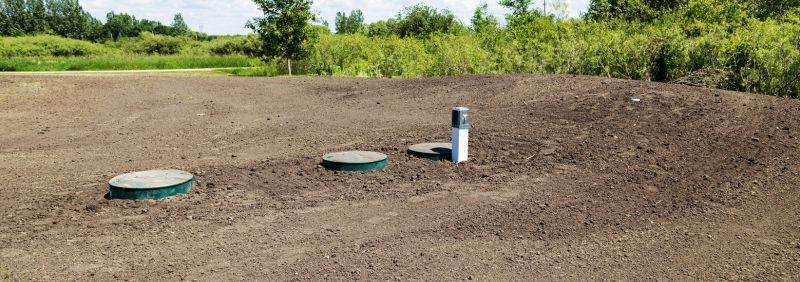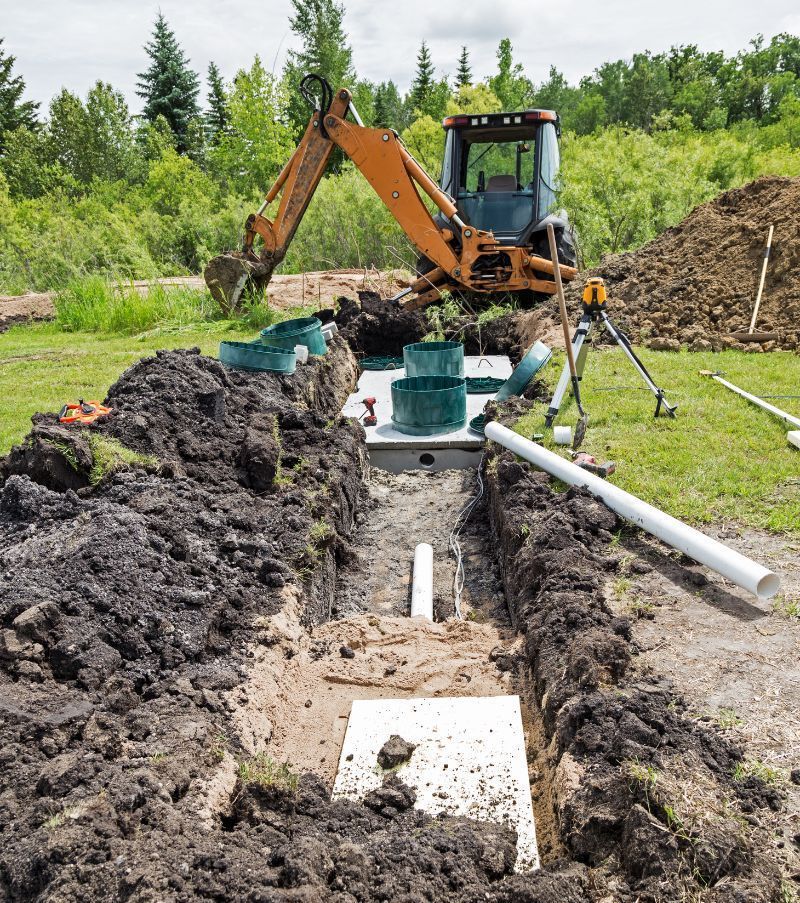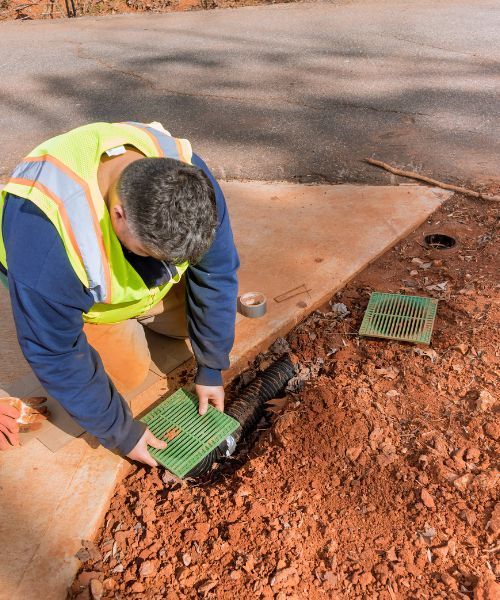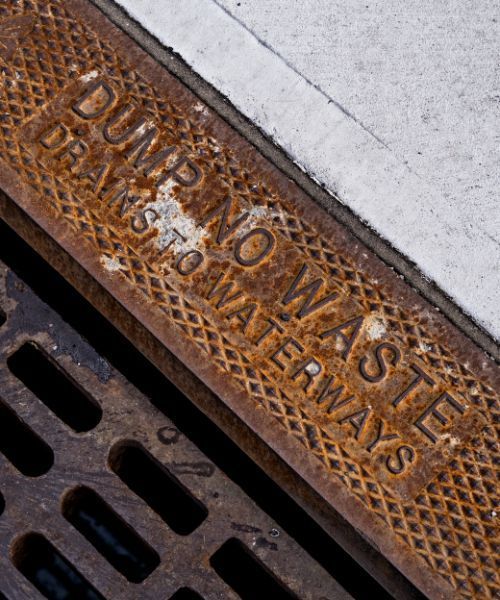What Kind of Septic Tank Do I Need? Palmdale, CA: Expert Guide to Choosing the Right System
Choosing the right septic tank for your Palmdale, CA property...

...is imperative for proper waste management and environmental protection. The type of septic tank you need depends on factors like your property size, soil conditions, and household size. Typically, homes in Palmdale use either concrete or plastic septic tanks, with sizes ranging from 750 to 1,500 gallons for average households.
Concrete tanks are popular for their long lasting durability, often lasting 20-30 years with proper maintenance. Plastic tanks, on the other hand, while lighter and easier to install, may be suitable for smaller properties or areas with high water tables. Your local septic service provider can help assess your specific needs and recommend the best option for your situation.
Remember that proper installation and regular maintenance are key to ensuring your septic system functions effectively. Residents in the Palmdale or Lancaster area can find reputable septic services to assist with tank selection, installation, and ongoing care. By choosing the right septic tank and maintaining it well, you'll protect your property and the environment for years to come.
Determining the Right Septic System for Your Home in Palmdale
Selecting an appropriate septic system for your Palmdale home involves considering several key factors and understanding the available options. A well-chosen system ensures efficient wastewater management and compliance with local regulations.
Factors Influencing Septic System Selection
Your property's characteristics play a crucial role in determining the right septic system.
- Soil type in Palmdale varies, affecting the system's efficiency. Sandy soils allow for better water absorption, while clay soils may require larger drain fields.
- The size of your household impacts system capacity. Generally, you'll need a larger tank for more occupants. A typical guideline is 250 gallons per bedroom.
- Water usage patterns matter too. If you use water-efficient appliances, you might need a smaller system. High water usage requires a larger capacity to handle the increased flow.
- Local regulations in Palmdale, CA dictate minimum tank sizes and setback distances. Check with the city's building department for specific requirements.
Types of Septic Systems Available in Palmdale, CA
Conventional septic systems are common in Palmdale. These consist of a septic tank and a drain field. They work well in areas with suitable soil conditions and adequate space, however, if space is tight you might have to go another route.
| System Type | Best For | Advantages | Considerations |
|---|---|---|---|
| Conventional System | Properties with good soil condition | Simple and cost-effective | Requires adequate space for drain fields |
| Aerobic Treatment | Poor soil or limited space | Thorough wastewater treatment | Higher cost and maintenance needs |
| Mound System | High groundwater or shallow soil | Works in challenging soil conditions | Requires raised drain fields |
| Pressurized System | Uneven terrain or uphill drain feilds | Even distribution of effluent | Needs pumps, increasing complexity |
- This chart makes it easier to evaluate which system best suits your property based on your individual situation.
Septic Tank Installation Process in Palmdale
Installing a septic tank in Palmdale requires a little planning and assessing with the city and or county. It’s a somewhat painless process so don’t worry too much, your install guys are a wealth of knowledge and can help you big time as they are local to the Palmdale and Lancaster areas. Here is what is involved.
Permits and Regulations in Palmdale
Before installing a septic tank in Palmdale, you must obtain the necessary permits from the Los Angeles County Department of Public Health. They oversee septic system regulations in the area.
You'll need to submit detailed plans of your proposed septic system. These plans should include the tank size, location, and leach field design. The department will review your plans to ensure they meet local health and environmental standards.
Palmdale has specific requirements for septic tank setbacks from property lines, wells, and water bodies. You must adhere to these guidelines to protect groundwater and public health.
Installation Steps and Considerations
Once you have your permits, the installation process can begin. First, a contractor will excavate the area for your septic tank and leach field.
The tank is then placed in the excavated hole and connected to your home's plumbing. Making sure the tank is level will help it to work correctly.
Next, the leach field is installed. This involves laying perforated pipes in gravel-filled trenches. The size of your leach field depends on soil conditions and household size.
After installation, an inspector will check the system before it's covered. They'll ensure all components are correctly installed and meet code requirements.
Maintaining Your Septic System
With your new septic system installed to keep it functioning properly and to avoid costly repairs, it needs upkeep. Proper care involves routine pumping, inspections, and addressing common issues promptly.
Routine Septic Pumping and Inspection
Schedule professional septic pumping every 3-5 years, depending on your household size and tank capacity. During pumping, have the technician inspect your system for signs of damage or wear.
Keep detailed records of pumping dates and inspections to track your system's health. Between professional visits, monitor your drain field for wet spots or foul odors, which may indicate problems.
Conserve water to reduce strain on your septic system by doing things like fixing leaky faucets and toilets promptly or spreading out laundry loads throughout the week instead of doing multiple loads in one day.

Addressing Common Septic Tank Problems
- Watch for warning signs like slow drains, gurgling pipes, or sewage odors. These may indicate a clogged tank or full system needing immediate attention.
- Avoid flushing non-biodegradable items like wipes, feminine products, or dental floss. These can clog your system and require expensive repairs.
- Use septic-safe cleaning products to protect the beneficial bacteria in your tank. Harsh chemicals can disrupt the natural breakdown process and lead to system failure.
If you notice standing water or unusually lush grass over your drain field, contact a septic professional immediately. These signs often indicate a failing system that needs repair.

Choosing the Right Septic Services Provider
When selecting a septic services provider in Palmdale, CA, several factors deserve your attention. Start by verifying the company's licensing and certifications. This ensures they meet local and state requirements for septic system work.
Experience is a must. Look for providers with a proven track record in handling septic systems similar to yours. Ask about their expertise with different tank types and sizes.
Check customer reviews and ask for references. Positive feedback from previous clients can indicate reliable service quality.
Consider the range of services offered. A comprehensive provider should offer:
- Tank pumping
- Inspections
- Maintenance
- Emergency repairs
- Riser installations
Transparent pricing should be valued. Request detailed quotes and avoid companies with hidden fees.
Don’t overlook the importance of customer service. Just talk to them and see if they communicate clearly or respond to your questions in a concise manner.
By carefully evaluating these aspects, you can find a trustworthy septic services provider in Palmdale to keep your system running smoothly.
FAQ's
How do I determine the appropriate size of septic tank for my home in Palmdale, CA?
The size of your septic tank depends on your home's square footage and the number of bedrooms. For a typical 3-bedroom home, a 1,000-gallon tank is often sufficient. Larger homes may require 1,500 or 2,000-gallon tanks.
Consult with a local septic professional to assess your specific needs. They'll consider factors like water usage patterns and soil conditions to recommend the optimal tank size.
What are the septic system regulations in Palmdale, California?
Palmdale follows California state regulations for septic systems. These include minimum setback distances from property lines, wells, and water bodies. Tanks must be watertight and made of approved materials.
Regular inspections and maintenance are required. You'll need to obtain permits for new installations or major repairs. Check with the Los Angeles County Department of
Public Health for the most up-to-date regulations.
Is it possible to install a plastic septic tank in Palmdale, CA, and does it comply with state regulations?
Plastic septic tanks are allowed in Palmdale if they meet state-approved standards. These tanks must be certified by IAPMO or a similar recognized agency. They need to withstand soil pressure and be resistant to corrosion.
Ensure the plastic tank you choose is designed for your specific soil conditions and installation depth. Always verify compliance with local codes before installation.
What types of septic systems are commonly used and approved in California?
Conventional gravity systems are most common in California. These consist of a septic tank and leach field. Alternative systems like aerobic treatment units, mound systems, and pressure distribution systems are also approved.
Your choice depends on soil conditions, lot size, and proximity to water sources. Some areas may require advanced treatment systems to protect groundwater quality.
How do I arrange for a septic tank inspection in Palmdale, and what does the inspection entail?
Contact a licensed septic inspector or pumping service in Palmdale to schedule an inspection. Many local companies offer this service. The inspection typically includes:
1. Checking tank levels and condition
2. Examining inlet and outlet baffles
3. Inspecting the leach field for signs of failure
4. Verifying proper system operation
Inspections are recommended every 1-3 years to ensure your system functions correctly and prevent costly repairs.
What is the process for obtaining a septic system permit in the City of Palmdale?
To obtain a septic system permit in Palmdale:
1. Submit an application to the Los Angeles County Department of Public Health.
2. Provide a site plan and system design by a qualified professional.
3. Pay the required fees.
4. Schedule and pass necessary inspections during installation.
The process typically takes several weeks. Ensure all documentation is complete to avoid delays. Work with a licensed contractor familiar with local requirements for best results.
Drainage Solutions and Repair
Professional drainage services offer effective solutions for water-related issues around your home. From clogged pipes to more complex plumbing problems, experts can diagnose and fix various drainage concerns to protect your property.
Professional Drain Cleaning Services
- Professional plumbers use specialized tools to clear blockages and restore proper water flow. Hydro jetting employs high-pressure water to remove stubborn clogs and buildup. Video camera inspections allow plumbers to locate and assess issues deep within pipes.
- For minor clogs, plungers or drain snakes may suffice. However, recurring blockages often indicate deeper problems requiring professional attention. Regular drain cleaning can prevent future issues and extend the life of your plumbing system.
- Emergency plumbing services are available for urgent drainage problems that can't wait. These professionals respond quickly to prevent water damage and restore functionality to your home's plumbing.
Repair Options for Common Plumbing Problems
- Drain line repairs often involve excavation to access and replace damaged pipes. Trenchless repair methods can minimize disruption to your property. These techniques allow plumbers to fix underground pipes without extensive digging.
- Commercial plumbing services handle larger-scale drainage issues in business settings. These specialists have the equipment and expertise to manage complex systems efficiently.

Daily's Backhoe Services Palmdale
Don’t wait for a small problem to become a big one! We don’t sweat the little stuff but we are geared all in for the bigger jobs. Reach out now to get started!